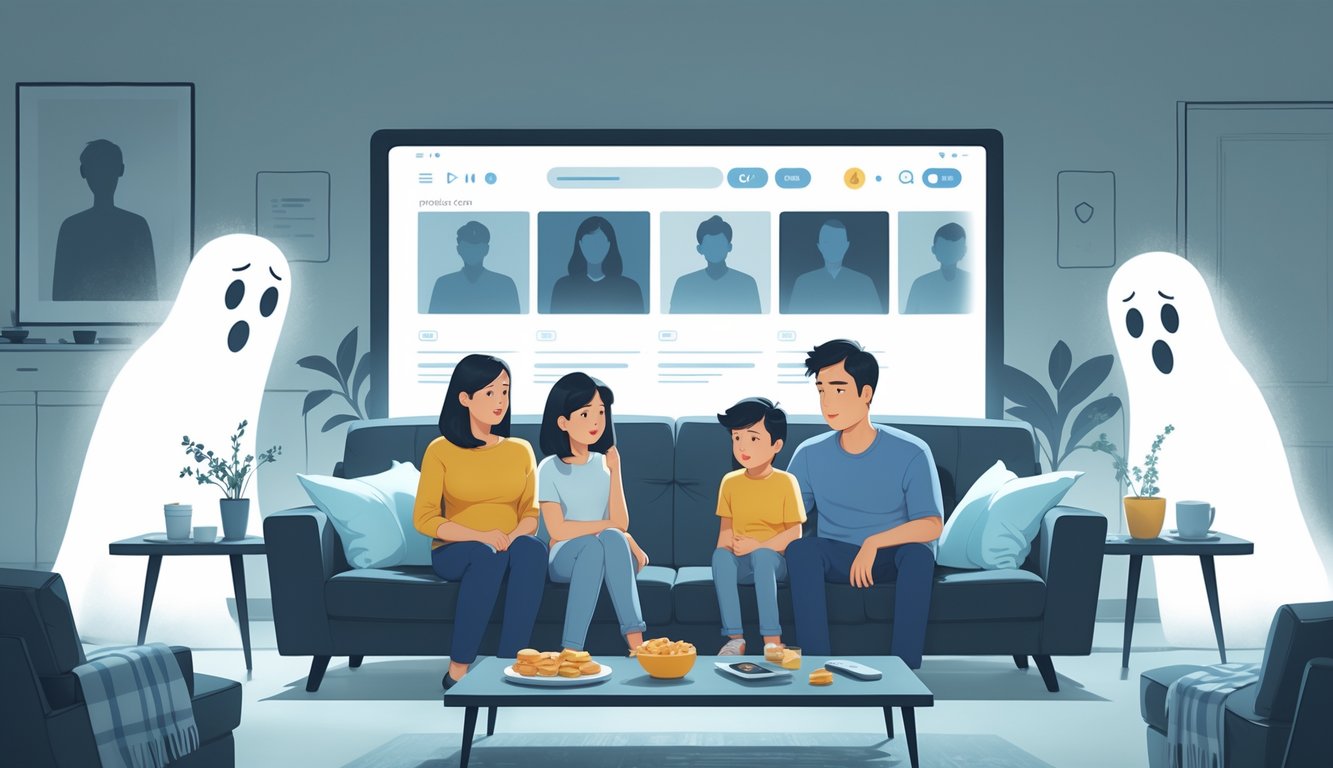
So, picture this: I’m hunched over the remote, flipping through Netflix, stuck in this endless loop—kid mode, adult mode, back again—just to find something halfway decent for movie night. “Family-friendly,” they say. Sure. Algorithms catch every late-night horror binge, and suddenly the kids’ suggestions go off the rails. I mean, why did SpongeBob show up next to some bleak crime series? I’m not explaining that to a six-year-old. Family profiles are supposed to make things easier, but honestly, they just make recommendations weird and movie night awkward. Oh, and apparently, less than 20% of families even watch together now? That’s not just me being cynical—here’s the proof. Personalized profiles? Feels like theater.
Here’s the “multi-profile paradox.” I keep trying to merge us, but then the playlist just nose-dives into baby cartoons right after dinner. Anything remotely interesting? Gone. Meanwhile, my partner’s convinced the pet insurance ad is stalking them across every screen in the house. Tracking? Broken. Parental controls, PINs, time limits—at this point, it’s less “family fun” and more “UX obstacle course.” Why do these platforms keep pretending families want to watch separately? It’s like a Zoom call, but everyone’s sitting in the same room, ignoring each other.
Anyway, a friend (who actually designs user interfaces—so, not just me ranting) said these profiles exist for solo binging, not togetherness. That floored me. Why can’t there be one real family profile? Just a normal digital living room, minus the algorithmic chaos and the parade of angry cartoon faces. My kid, by the way, once slammed “add profile” fourteen times in a row. Now Disney+ thinks we’re a small commune. Recommendations? Utter chaos.
Understanding Family Profiles on Streaming Platforms
Flipping through Netflix, juggling profiles like mismatched socks, I keep thinking—how did we get here? Every app’s got it. Click your face, pick your cartoon, get your “personalized” queue, and then wonder why the system’s so messy. Account chaos, weird suggestions, sticky notes with passwords. Hulu, Disney+, Peacock, MAX, Apple TV+, Prime Video—same idea, just with more ads or some “premium” upsell you didn’t ask for.
How Family Profiles Work
I’ve accidentally made the dog a profile. Twice. Not kidding. Every person (or dog, apparently) gets an avatar, the apps track your shows, drop a progress bar, suggest what to watch next—except Prime Video’s “continue watching” is basically a black hole for me. Stuff just vanishes.
The settings? Hidden like Easter eggs. Parental controls? Good luck. Sometimes a purple dinosaur icon can buy movies, because why not. The Parents Television and Media Council actually mapped out how many hoops you have to jump through to keep explicit stuff away from kids—here’s their breakdown. I doubt any designer ever had to referee two little kids fighting over who finished the last episode.
Popular Streaming Services Offering Family Profiles
Every new app—Netflix, Hulu, Disney+, YouTube Premium, whatever—it’s the same: “Who’s watching?” Netflix shoves it in your face. Disney+ has those avatars (Grogu is a trap; don’t pick it unless you want your queue to go full Star Wars). Hulu? The default icons look like they were picked at random. MAX? Just initials. “KG”—who is that? No clue.
Peacock, Apple TV+, Prime—they all sell the “family” thing, but it’s a mess. Prime lets me manage from my phone, but after some random update last year, I had to re-link everyone. Deleted my partner’s ten-year-old profile once—would not recommend if you value domestic peace. Apple TV+? Still hiding the toggle behind a billion swipes.
Why Families Choose Shared Accounts
Let’s be real: it’s about money. Disney+ jacks up prices, Netflix cracks down on password sharing (Statista says user happiness tanked in like five countries), and suddenly everyone’s just using one login. Not for togetherness—just to avoid paying more. The “just use my login” dance is universal. You’re not searching for the remote, you’re hoping you don’t get kicked out mid-episode because someone else wanted to watch at 2 a.m.
It’s always about convenience. One bill, fewer passwords, at least until Hulu throws in a random “service fee” for no reason. Most people only bother with family profiles after a Saturday morning of failed parental controls. YouTube Kids once thought Family Guy was appropriate. That’s… not ideal. Shared profiles break fast—one aunt’s K-drama binge, one toddler’s Paw Patrol marathon, and your recommendations are toast.
So yeah, we’re all just hoping the algorithm figures us out, but it never does. It just blends everyone’s tastes into a weird soup.
Inadvertent Exposure to Inappropriate Content
Honestly, the so-called “safe zones” for kids? Not buying it. Cute icons, sure, but mix a few Cocomelon episodes with my half-watched thriller and things get dicey. Parental controls, content filters—they all promise peace of mind, but then something weird pops up and you’re explaining to your kid why there’s a zombie in the “Recommended For You” bar.
Challenges with Parental Controls
Parental controls are a maze. Netflix wants a PIN, Disney+ wants a birthdate, Amazon Prime changes the color of the profile and calls it a day. Internet Matters says you can “review content,” but honestly, who has time for that?
The loopholes are everywhere. “PG-13” is a joke—sometimes it means “prepare for nightmares.” Cartoons suddenly drop a dark episode at 2 a.m. The rating systems barely catch half the stuff they should unless you micromanage every setting. One night of peace, next morning my kid’s describing a “scary man” from a cartoon. Foolproof? Not even close.
And ratings? They change by country, or just randomly update. If someone tells you “just turn on parental controls,” they don’t have a four-year-old who can outsmart a PIN lock before breakfast.



